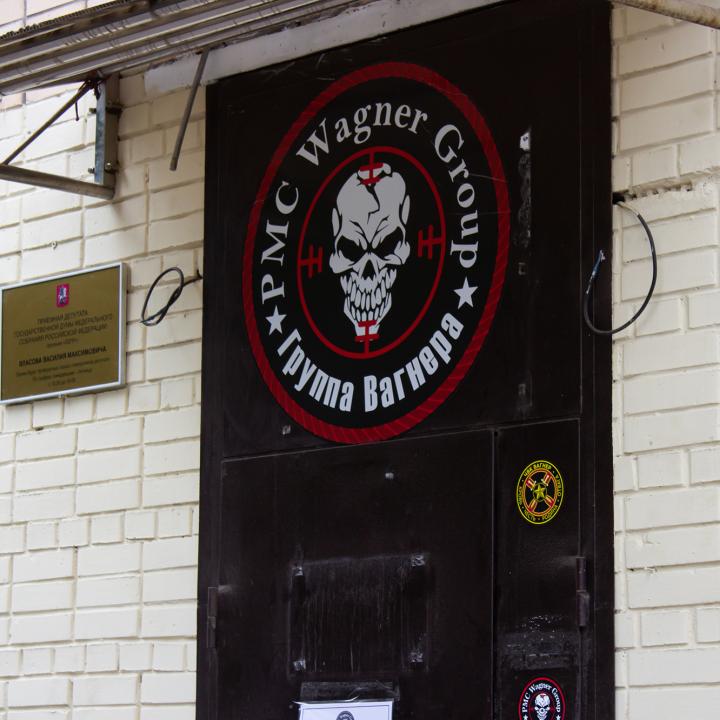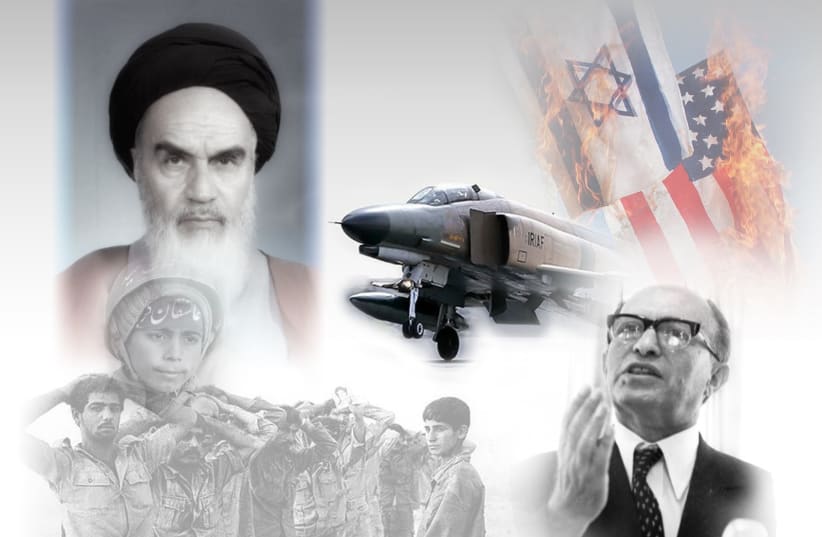ردود الفعل الإيرانية على المواجهة التي قامت بها مجموعة “فاغنر” في روسيا
فرزين نديمي/معهد واشنطن/29 حزيران/2023
Iranian Reactions to the Wagner Standoff in Russia
Farzin Nadimi/The Washington Institute./June 29/2023
Iranian officials are keenly aware that Putin’s crisis parallels their own vulnerabilities, so they will likely step up their efforts to cement the bilateral security relationship and obtain Russian weapons and technology.
As units from Yevgeny Prigozhin’s Wagner Group motored up the M4 highway toward Moscow on June 24, Iranian media followed the spectacle anxiously, wondering whether foreign actors were behind the move, whether the rebellious military contractors would be able to reach Moscow, and whether Vladimir Putin’s reign would survive the humiliation. Hardline media such as the Tasnim News Agency, affiliated with the Islamic Revolutionary Guard Corps, were quick to draw an analogy between the Wagner insurrection and the so-called “hybrid war waged by the conspiring West and NATO” against the Iranian regime, suggesting civil wars were being instigated in both countries. IRGC-affiliated media laid out elaborate scenarios to back this theory, including one in which Wagner members were supposedly fooled by a NATO “media disinformation trap” that persuaded them to turn their guns against their government. Indeed, various outlets expressed concern that the episode primarily served Ukrainian and Western interests.
Hardliners also accused Iran’s domestic reformists and their media supporters of prematurely siding with Prigozhin against Putin. The managing editor of Kayhan—Hossein Shariatmadari, who was placed in that post by Supreme Leader Ali Khamenei—pointed his finger at reformists, harshly criticizing them for undermining the regime by “supporting” Prigozhin’s short-lived march toward Moscow. Notably, he likened it to their past support for the 2015 nuclear deal.
Hardliners seemed especially alarmed by the sight of armed Russians quickly mounting a surprise challenge that briefly threatened Russia’s seemingly invincible central government; the possibility of internal Russian collusion with Prigozhin worried them as well. In their view, the Iranian people and disenchanted military and security personnel might be inspired to adopt similar tactics in order to jumpstart the longstanding struggle against the regime in Tehran. Accordingly, after framing the Wagner insurrection as a Western plot to undermine Putin and contain Moscow’s military might, most regime media expressed relief that Putin had “skillfully” thwarted the threat and survived the episode unscathed.
Hardline commentators have gone so far in supporting Putin against “NATO-led plotters” that even some conservatives have urged a more balanced approach. For instance, outspoken former parliamentarian Ali Motahhari criticized Iranians who “tie the nation’s interests to those of Russia” and called for a return to the past revolutionary policy of non-alignment, as reflected in the old motto “no to West, no to East.”
These days, however, Iranian leaders openly talk of their desire to take sides with Russia and China in a “new multipolar world order” to the detriment of the United States. They also want to get a good return on their political investment in Putin’s Russia, highlighted by their provision of Shahed suicide drones and ammunition to Moscow for use against Ukraine. In particular, they want Russia to help improve Iran’s weapons programs and deliver a promised fleet of advanced Su-35 fighter jets.
It therefore came as little surprise when President Ebrahim Raisi and Foreign Minister Hossein Amir-Abdollahian phoned their Russian counterparts one day after the Wagner “protest march,” voicing Tehran’s support for “Russia’s national sovereignty” amid the threat of rebellion. Likewise, Armed Forces General Staff commander Maj. Gen. Mohamad Bagheri called Russian defense minister Sergei Shoigu on June 28 to convey his support, ask for assurances about the state of affairs in Russia, and invite him to Tehran—though this visit might not happen anytime soon.
In the longer term, the incident will no doubt remind Tehran that having a powerful foreign ally like Russia should not be taken for granted. Iranian officials will likely step up their entreaties for Russia’s promised weapons and technologies. Gen. Ahmad Reza Radan, head of the Law Enforcement Command, has already been dispatched for a rare visit to Moscow to discuss bilateral security cooperation. On June 28, he and influential Russian National Guard (Rosgvardiya) commander Viktor Zolotov discussed “arms and ammunition, the fight against terrorism, drug trafficking, and destabilizing security threats.” Notably, Rosgvardiya was formed in 2016 for the express purpose of cracking down on Russia’s growing street protests, so Radan and Zolotov’s meeting is a further sign that the two regimes will draw even closer together in an effort to boost their mutual survival. As a Kayhan columnist wrote on June 27, “A blow that fails to kill you will make you even stronger.”
*Farzin Nadimi is a senior fellow with The Washington Institute.
ردود الفعل الإيرانية على المواجهة التي قامت بها مجموعة “فاغنر” في روسيا
فرزين نديمي/معهد واشنطن/29 حزيران/2023
يدرك المسؤولون الإيرانيون تماماً أن أزمة بوتين توازي نقاط ضعفهم، لذلك من المرجح أن يكثفوا جهودهم لتعزيز العلاقات الأمنية الثنائية والحصول على الأسلحة والتكنولوجيا الروسية.
بينما كانت وحدات من مجموعة “فاغنر” بقيادة يفغيني بريغوزين تتجه عبر الطريق السريع “أم 4” نحو موسكو في 24 حزيران/يونيو، تابعت وسائل الإعلام الإيرانية الأحداث بقلق، بحيث لم تنفك تتساءل عمّا إذا كانت جهات فاعلة أجنبية هي التي تدير هذا التحرك، وما إذا كان المتعاقدون العسكريون المتمردون سيتمكنون فعلاً من الوصول إلى موسكو وما إذا كان عهد فلاديمير بوتين سيصمد في وجه المذلة. وقد سارعت وسائل الإعلام المتشددة مثل “وكالة تسنيم للأنباء” التابعة “للحرس الثوري الإيراني” إلى تسليط الضوء على وجه التشابه بين تمرد “فاغنر” وما يسمى بـ”الحرب الهجينة التي يشنّها الغرب وحلف ‘الناتو’ المتآمران” ضد النظام الإيراني، مما يشير إلى أن الحروب الأهلية كانت مفتعلة في البلدين. وطرحت وسائل الإعلام التابعة “للحرس الثوري الإيراني” سيناريوهات موسعة لدعم هذه النظرية، تضمّن أحدها خداع “الناتو” لأفراد مجموعة “فاغنر” عبر “فخ إعلامي قائم على معلومات مضللة” أقنعهم بتوجيه أسلحتهم ضد حكومتهم. وبالفعل، أعربت عدة منافذ إعلامية عن خوفها من أن يكون هذا التحرك يصب أساساً في مصلحة أوكرانيا والغرب.
واتهم المتشددون أيضاً الإصلاحيين المحليين في إيران ومؤيديهم في وسائل الإعلام بالوقوف منذ البداية في صف بريغوزين ضد بوتين. وقد وجّه مدير التحرير في صحيفة “كيهان” – حسين شريعتمداري، الذي عينه المرشد الأعلى علي خامنئي في ذلك المنصب – أصابع الاتهام إلى الإصلاحيين، فأمطرهم بوابل من الانتقادات اللاذعة بأنهم أضعفوا النظام الإيراني بسبب “دعمهم” لزحف بريغوزين نحو موسكو الذي لم يدم طويلاً. والجدير بالذكر أنه شبّه ما يحصل بتأييدهم الاتفاق النووي عام 2015.
ويبدو أن المتشددين قلقون جدياً من قدرة مسلحين روس على طرح تحدٍ مفاجئ وسريع نجح لفترة قصيرة بتهديد الحكومة المركزية الروسية التي كات تبدو في الظاهر أنها لا تهزم، وكذلك من احتمال حياكة مؤامرات في الداخل الروسي مع بريغوزين. فبرأيهم، قد تحرّك مثل هذه الأحداث رغبة الشعب الإيراني وعناصر الجيش والأمن الخائبين، فيقرروا انتهاج تكتيكات مماثلة لإشعال فتيل صراع طويل الأمد مع النظام في طهران. وعليه، بعد تصوير تمرد “فاغنر” على أنه مؤامرة غربية لتحجيم بوتين واحتواء قدرة موسكو العسكرية، أعربت معظم وسائل الإعلام التابعة للنظام عن ارتياحها لنجاح بوتين “بمهارة” في درء التهديد والخروج من المأزق سليماً.
لقد بالغ المعلقون المتشددون في دعم بوتين ضد “المتآمرين بقيادة حلف ‘الناتو’ ” لدرجة أن بعض المحافظين حتى طالبوهم باعتماد نهج أكثر توازناً. على سبيل المثال، وجّه النائب السابق الذي يتكلم بجرأة، علي مطهري، انتقادات لاذعة إلى الإيرانيين الذين “يربطون مصالح الأمة بمصالح روسيا” ودعا إلى العودة إلى السياسة الثورية السابقة القائمة على عدم الاصطفاف والتي يعكسها الشعار القديم “لا للغرب، لا للشرق”.
لكن في الوقت الراهن، يتحدث القادة الإيرانيون صراحةً عن رغبتهم في الانحياز إلى روسيا والصين في إطار “نظام عالمي جديد متعدد الأقطاب” على حساب الولايات المتحدة. كما يريدون تحقيق مكاسب جيدة من استثمارهم السياسي في روسيا خلال عهد بوتين، الذي يظهر من خلال تزويدها بطائرات مسيّرة انتحارية من نوع “شاهد” وذخائر كي تستخدمها ضد أوكرانيا. وبشكل خاص، هم يريدون من روسيا مساعدتهم على تحسين برامج الأسلحة التي تطورّها إيران وتسليمها أسطولاً من مقاتلات “إس يو 35” المتطوّرة كان قد تم الوعد بها سابقاً.
وبالتالي، ليس من المفاجئ أن يكون الرئيس إبراهيم رئيسي ووزير الخارجية حسين أمير عبد اللهيان قد اتصلا بنظيريهما الروسيين بعد يوم واحد من انطلاق “المسيرة الاحتجاجية” لمجموعة “فاغنر” من أجل الإعراب عن دعم طهران “لسيادة روسيا الوطنية” وسط التهديدات بالتمرد. وعلى نحو مماثل، اتصل رئيس هيئة الأركان العامة للقوات المسلحة الإيرانية اللواء محمد باقري بوزير الدفاع الروسي سيرغي شويغو في 28 حزيران/يونيو ليبلغه بتأييده ويأخذ منه تطمينات حيال الوضع الراهن في روسيا ويدعوه لزيارة طهران – على الرغم من أن هذه الزيارة قد لا تحدث في أي وقت قريب.
أما على المدى البعيد، ليس هناك شك بأن الحادثة ستذكّر طهران بأن وجود حليف خارجي قوي مثل روسيا لا ينبغي أن يؤخذ على أنه أمر مسلم به. ومن المرجح أن يزيد المسؤولون الإيرانيون وتيرة مطالباتهم بالأسلحة والتكنولوجيات التي وعدتهم بها روسيا. وفي هذا الإطار، قد تم أساساً إرسال العميد أحمد رضا رادان، القائد العام “لقوى الأمن الداخلي”، في زيارة نادرة إلى موسكو لمناقشة التعاون الأمني بين البلدين. وفي 28 حزيران/يونيو، ناقش مع قائد “الحرس الوطني الروسي” الذي يتمتع بنفوذ قوي فيكتور زولوتوف مسائل “الأسلحة والذخائر ومكافحة الإرهاب وتجارة المخدرات والتهديدات الأمنية المزعزعة للاستقرار”. تجدر الملاحظة أن “الحرس الوطني الروسي” تأسس عام 2016 بهدف قمع الاحتجاجات المتزايدة التي كانت تعّم شوارع البلاد، لذا يُعتبر اجتماع رادان وزولوتوف مؤشراً إضافياً على أن النظامين سيتعاونان بصورة أكثر لضمان صمودهما المتبادل. وكما كتب محرر عمود في صحيفة “كيهان” في 27 حزيران/يونيو “الضربة التي تفشل في قتلك ستجعلك أقوى بَعْد”.
*فرزين نديمي هو زميل أقدم في معهد واشنطن.





















